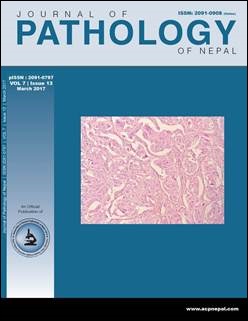Blood Lead Level among school children in an Industrial city of Nepal
DOI:
https://doi.org/10.3126/jpn.v7i1.16943Keywords:
Blood, LeadAbstract
Background: Widespread use of lead has caused extensive environmental contamination and health problems in many parts of the world. Children are particularly vulnerable and even relatively low levels of exposure can cause serious health conditions. Our objective was to determine the prevalence of blood lead level in children in industrial city of Nepal, Birgunj.
Materials and Methods: The cross sectional study was done on 50 school going student in Birgunj city, Nepal from November 2016 to January 2017. Questionnaire was used to collect data. Capillary blood was drawn and Blood Lead Level was measured immediately. SPSS ver. 22 was used to analyze the data.
Results: The mean age of children in study was 12.5 ± 1.11 years.Among 50 children, 54% were male and 46% were female. The mean blood lead level was 20.33±9.36 μg/dl (male 21.08±8.87μg/dl, female 19.46±10.92 μg/dl). All the children in the study have elevated blood lead level and 84% of them have >10 μg/dl. About 26% of children have blood lead level between 15-20 μg/dl, 12% have level 20-25 μg/dl and 4% of them have more than 35 μg/dl.
Conclusion: The prevalence of blood lead level in children from the industrial city of Nepal is alarmingly high. Children exposed with chipped paints have high level of blood lead level. However, further study in large population is required to address the current situation regarding the lead exposure to children.
Downloads
Downloads
Published
How to Cite
Issue
Section
License
This license enables reusers to distribute, remix, adapt, and build upon the material in any medium or format, so long as attribution is given to the creator. The license allows for commercial use.




